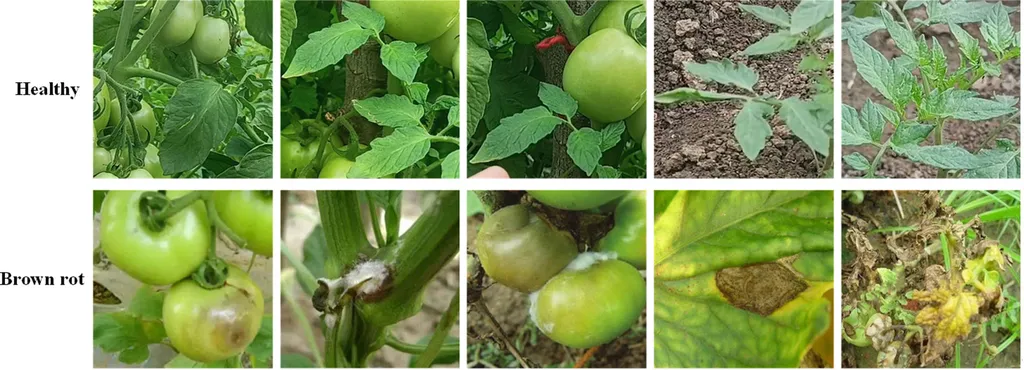In the ever-evolving landscape of smart agriculture, a groundbreaking study led by Xiaowei Li from the School of Rail Transportation at Shandong Jiaotong University in China is set to revolutionize how we identify and combat fruit leaf diseases. Published in the open-access journal Horticulturae, which translates to “Horticulture” in English, this research introduces a novel deep learning method that could significantly enhance the precision and efficiency of disease detection in fruit crops.
The study focuses on the development of a Frequency-Adaptive Attention (FA-attention) mechanism, which leverages the often-overlooked frequency domain features in fruit leaf disease regions. “Deep learning models have shown great promise in image recognition tasks, but they often struggle with complex backgrounds,” explains Li. “By integrating frequency domain features into our model, we can improve recognition performance and achieve higher accuracy even in challenging environments.”
The FA-attention mechanism combines Fourier transform with the attention mechanism to extract frequency domain features as key indicators of disease. These features are then integrated with the Unet model, a popular deep learning architecture for image segmentation, to generate feature maps that are strongly related to frequency domain characteristics. These feature maps are fused with multi-scale convolutional feature maps and used for classification, resulting in a more robust and accurate disease identification system.
The researchers conducted experiments on two datasets: the Plant Village (PV) dataset and the Plant Pathology (PP) dataset, both of which contain complex backgrounds that can confound traditional recognition algorithms. The results were impressive. The proposed FA-attention mechanism achieved a recognition accuracy of 99.91% on the PV dataset and 89.59% on the PP dataset. Moreover, the model demonstrated a significantly improved convergence speed, reaching 94% accuracy with only 20 epochs.
The implications of this research for the agricultural sector are substantial. Accurate and efficient disease identification is crucial for maintaining crop health and ensuring high yields. By providing farmers with a reliable tool for early disease detection, this technology can help minimize crop losses and reduce the need for chemical interventions, ultimately leading to more sustainable and profitable farming practices.
Li’s work also highlights the potential for deep learning models to be adapted and enhanced for specific agricultural applications. “Our model performs better on complex background datasets compared to classical models and state-of-the-art (SOTA) models, demonstrating strong generalization capabilities,” says Li. This adaptability is key to the widespread adoption of smart agriculture technologies, as it allows for the development of tailored solutions that can address the unique challenges faced by different crops and growing conditions.
As the agricultural industry continues to embrace digital transformation, research like Li’s will play a pivotal role in shaping the future of smart agriculture. By harnessing the power of deep learning and frequency domain features, we can develop more sophisticated and effective tools for disease identification, ultimately contributing to a more resilient and productive agricultural sector.
In the words of Li, “This method not only improves the recognition accuracy but also enhances the convergence speed, making it a promising tool for practical applications in the field.” With further refinement and testing, this technology could become an invaluable asset for farmers and agronomists worldwide, helping to secure food supplies and promote sustainable agriculture practices.

